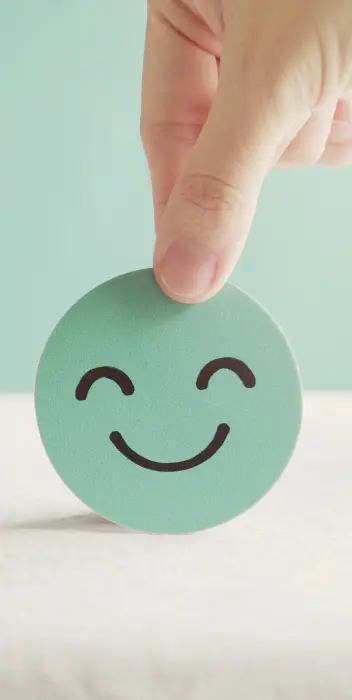In today’s competitive business landscape, organizations understand the significance of employee engagement in driving success and achieving long-term goals. Employee engagement goes beyond superficial job satisfaction; it reflects the emotional commitment, dedication, and enthusiasm employees have towards their work and the organization. In this blog post, we will delve into the definition of employee engagement, explore its importance, discuss best practices for fostering engagement, and highlight effective methods for measuring it.
Definition of Employee Engagement
Employee engagement refers to the extent to which employees are emotionally invested in their work, actively contribute to organizational goals, and genuinely care about the success of the company. It encompasses their sense of purpose, motivation, job satisfaction, and the overall connection they feel with their roles, teams, and the organization. Engaged employees are passionate, committed, and willing to go the extra mile to achieve exceptional results.
Components of Employee Engagement
Employee engagement is a multi-faceted concept that encompasses various subcomponents. Understanding these subcomponents can provide deeper insights into the factors that contribute to employee engagement. Let’s explore some of them:
• Sense of Purpose: Engaged employees have a clear understanding of how their work contributes to the larger goals and purpose of the organization. They find meaning and fulfillment in their roles, knowing that their efforts have a significant impact on the overall success of the company.
• Motivation: Engaged employees are intrinsically motivated. They possess a strong desire to excel and take pride in their work. They are driven by a sense of achievement, personal growth, and the desire to contribute their best to the organization.
• Job Satisfaction: Engaged employees derive satisfaction from their work. They enjoy what they do, find fulfillment in their responsibilities, and experience a sense of accomplishment. Job satisfaction is closely linked to engagement, as satisfied employees are more likely to invest themselves fully in their work.
• Connection with Roles: Engaged employees have a deep connection with their roles. They understand how their skills and abilities align with their responsibilities and experience a sense of competency and mastery in their work. This alignment fosters a sense of self-efficacy and confidence, further fueling their engagement.
• Connection with Teams: Engaged employees value and foster positive relationships with their colleagues and teams. They actively contribute to collaborative efforts, support their teammates, and create a sense of camaraderie. A strong sense of belonging and teamwork enhances their engagement levels.
• Connection with the Organization: Engaged employees feel a strong connection and loyalty towards the organization. They align with the company’s mission, vision, and values, and take pride in being part of the organization. This connection fosters a sense of loyalty and commitment, driving their engagement.
• Going the Extra Mile: Engaged employees exhibit discretionary effort. They willingly go above and beyond their defined roles to contribute to organizational success. They proactively seek opportunities to innovate, improve processes, and make a positive impact.
Importance of Employee Engagement
Employee engagement plays a crucial role in the success of an organization. Engaged employees are not only more productive, innovative, and committed to delivering high-quality work, but they also contribute to the prevention of “quiet quitting.” When employees are disengaged, they may still physically show up to work, but their motivation and commitment decline, leading to reduced productivity and potential turnover.
By fostering a culture of employee engagement, organizations can combat the phenomenon of quiet quitting. Engaged employees are less likely to silently disengage and leave the organization without notice. Instead, they are more likely to openly communicate their concerns, seek solutions, and actively contribute to the success of the company.
Furthermore, engaged employees tend to provide superior customer service, resulting in heightened customer satisfaction and increased customer loyalty. This not only enhances the organization’s reputation but also leads to long-term business success.
Moreover, employee engagement has a direct impact on employer branding. A highly engaged workforce creates a positive image of the organization both internally and externally. Engaged employees become advocates for the company, speaking positively about their experiences, and attracting top talent to join the organization. This positive employer branding helps in attracting and retaining skilled employees, ultimately leading to long-term success and a competitive advantage in the market.
Best Practices
While best practices may already be familiar, it is crucial to remember their importance as they hold the key to success.
1. Foster a Positive Work Culture: Create a supportive and inclusive work environment where employees feel valued, respected, and appreciated. Encourage collaboration, teamwork, and open communication. Implement strategies such as team-building activities, mentorship programs, and employee recognition initiatives to foster a positive workplace culture.
2. Provide Growth Opportunities: Employees are more engaged when they have opportunities for professional development and career advancement. Offer training programs, workshops, and resources to help employees enhance their skills and acquire new knowledge. Encourage continuous learning and provide clear pathways for growth within the organization.
3. Ensure Effective Communication: Establish clear and transparent communication channels throughout the organization. Encourage two-way communication, active listening, and regular feedback. Regularly communicate organizational updates, goals, and expectations to ensure employees are informed and aligned with the company’s vision.
4. Recognize Achievements: Acknowledge and appreciate employees’ efforts, achievements, and contributions. Implement a robust recognition and rewards program that celebrates individual and team accomplishments. Regularly recognize employees publicly, both formally and informally, to motivate and inspire them.
5. Promote Work-Life Balance: Support work-life balance by offering flexible work arrangements, promoting employee well-being initiatives, and encouraging a healthy work-life integration. Ensure employees have the necessary resources and support to manage their personal and professional commitments effectively.
How to Measure
Measuring employee engagement is essential to understand the effectiveness of engagement initiatives and identify areas for improvement. Common methods for measuring engagement include:
• Employee Surveys: Conduct regular surveys to gather feedback on employee satisfaction, motivation, and engagement levels. Analyze the results to identify trends, strengths, and areas requiring attention.
• Feedback Sessions: Provide opportunities for employees to voice their opinions, concerns, and suggestions through one-on-one meetings, focus groups, or suggestion boxes. Actively listen to their feedback and take appropriate actions to address their needs.
• Performance Indicators: Track key performance indicators such as productivity, absenteeism rates, and customer satisfaction scores. High levels of engagement often correlate with positive performance indicators.
• Turnover and Retention Rates: Monitor employee turnover and retention rates. Engaged employees are more likely to stay with the organization, while disengaged employees may seek opportunities elsewhere.
Employee engagement plays a crucial role in driving organizational success. By understanding the definition of employee engagement, recognizing its importance, implementing best practices, and measuring engagement levels, organizations can create a positive work culture, retain top talent, boost productivity, and achieve their goals. Prioritizing employee engagement and investing in strategies to enhance it will lead to a happier, more motivated workforce and pave the way for long-term success in today’s competitive business landscape. Interested to see teroGO wellbeing and engagement platform in action? Book a demo or just send us your questions, we are happy to help!
Written by Nadège Geuens
This website stores cookies on your computer. These cookies are used to collect information about how you interact with our website and allows us to remember you. We use this information in order to improve and customize your browsing experience and for analytics and metrics about our visitors both on this website and other media. To find out more about the cookies we use, please see our Informativa sulla privacy.















